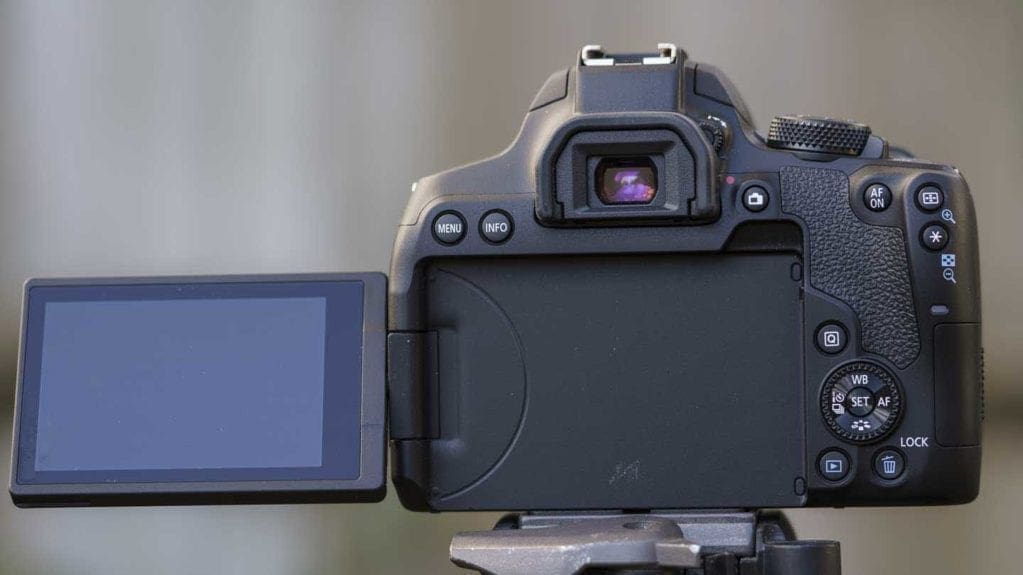While the build quality of the Canon 850D/8Ti is a bit lacklustre, the image quality is good. And the camera performs well in a wide variety of situations.
As it’s an optical viewfinder, when you look in the Rebel T8i / EOS 850D’s finder you see an uninterpreted view with none of the camera settings applied. That means if the exposure settings are set to underexpose the image, the view in the finder won’t change. If the exposure is going to be different from what the camera considers to be correct, the exposure meter will, of course, indicate the disparity.
Fortunately, the T8i / EOS 850D’s evaluative metering system is very good. It does a great job of assessing the scene and recommending settings that deliver a balanced exposure. Of course, that doesn’t mean you never need the exposure compensation control, but it’s not required excessively nor in some situations when an experienced photographer might expect it to be needed.
In live view mode, the imaging sensor is used for assessing the exposure and again, the Evaluative metering system is reliable. However, you can assess the exposure using the on-screen preview.
As a rule, Canon’s colour science is good and the 850D/T8i produces attractive colours. However, if you’re shooting in shade or overcast conditions, it’s worthwhile switching from the automatic white balance setting to the preset option for those conditions. It will give you warmer, more appealing images.
Canon EOS Rebel T8i / EOS 850D Autofocus Performance
Because there are two autofocus systems, one for use with the viewfinder and the other for use in live view mode, it can be a little disconcerting at first when you switch between the two modes. However, both AF systems are fast and accurate, even performing well in low light.
Live view mode brings the option to use Face detection and Tracking AF with Eye Detection, which works very well. It also functions in video mode, which is great news for vloggers and anyone wanting to create video of social events (remember those?). As I mentioned earlier, the850D/8Ti uses contrast detection when the video resolution is set to 4K, but Face detection and Tracking AF with Eye Detection still operates. It’s not quite as dependable as when the Dual Pixel AF system is in use, but it’s not bad.
Canon EOS Rebel T8i / EOS 850D Image Quality
It’s possible to shoot stills at up to ISO 51,200 on the Canon EOS 8Ti/850D, but it’s best to keep within the native range which tops-out at ISO 25,600, if you can. Noise is controlled reasonably well at that level but I’d aim to shoot at ISO 6,400 or lower whenever possible. Even at ISO 6,400 there’s some texture visible in the even-toned areas of raw files, it’s not especially objectionable, but it’s there.
There’s a good level of detail visible in low-ISO images, on par with what I’d expect from a 24Mp APS-C format sensor. The edges in images are handled nicely so that the overall look is natural and not overtly digital.
Dynamic Range
Canon appears to have raised its dynamic range game recently and its good to see that this trend has continued with the EOS 8Ti/850D. For starters, it doesn’t lose the highlights too early and the shadows don’t become inky-black too readily. Should you need to, however, the low-ISO images from the EOS 8Ti/850D can withstand substantial brightening without noise becoming obvious and colours going wayward.
That means there’s plenty of scope for capturing detail in a tricky scene with bright sun-lit areas and deep shadows. In some cases, you can brighten an image by as much as 4EV, even more in some cases, without causing problems.







